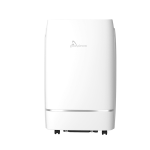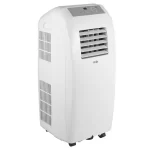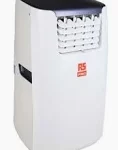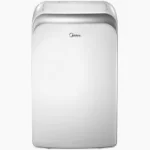Are They Worth Your money
Portable Air Conditioners
Portable air conditioners have become increasingly popular for their convenience and versatility in providing cooling relief.
However, with the wide range of options available on the market, many consumers wonder: Are portable air conditioners worth the investment?
In this blog, we’ll delve into the pros and cons of portable AC units, exploring their effectiveness, efficiency, and suitability for different environments.
Whether you’re considering a portable air conditioner for your home, office, or other spaces, join us as we examine the factors to consider when determining if these portable cooling units are the right choice for you.
What Are Portable Air Conditioners
Portable air conditioners are compact, freestanding units designed to provide localized cooling in specific areas of a home or office.
Unlike traditional window or central air conditioning systems, portable AC units do not require permanent installation and can be easily moved from room to room as needed.
These units typically consist of a single housing containing all the necessary components, including a compressor, condenser, evaporator, and fan.
They work by extracting warm air from the room, passing it over coils filled with refrigerant to cool it, and then expelling the cooled air back into the space while simultaneously releasing the heat outdoors through an exhaust hose or window vent.
What Is The Energy Consumption For Portable Air Conditioners
The electricity consumption of portable air conditioners can vary depending on several factors, including the unit’s cooling capacity, efficiency rating, usage patterns, and settings.
However, as a general guideline, portable air conditioners typically consume between 800 watts to 2,000 watts per hour of operation.
To provide a more specific estimate, let’s consider an example:
A portable air conditioner with a cooling capacity of 8,000 BTUs (British Thermal Units) typically consumes around 800 watts to 1,000 watts per hour when running on its highest cooling setting. This translates to approximately 0.8 kWh to 1 kWh per hour.
A larger portable air conditioner with a cooling capacity of 14,000 BTUs may consume between 1,200 watts to 2,000 watts per hour when running at full capacity. This equates to approximately 1.2 kWh to 2 kWh per hour.









- Keep in mind that actual electricity consumption can vary based on factors such as the unit’s energy efficiency rating (EER or SEER), the temperature setting, the size of the room being cooled, and the frequency of use.
Using energy-saving features such as programmable timers, eco modes, or adjusting the temperature settings can help reduce electricity consumption and save on energy costs over time.
How long does it take for a portable air conditioner to cool a room
portable air conditioners can typically cool a room of about 150 to 300 square feet in size within 10 to 30 minutes after the unit is turned on.
However, larger rooms may take longer to cool, and it may take additional time for the room to reach the desired temperature.
Factors such as insulation, windows, and doors can also affect cooling efficiency.
Rooms with poor insulation or multiple windows and doors may take longer to cool, as they may allow hot air to enter the room and cool air to escape.
To maximize cooling efficiency and reduce the time it takes to cool a room, it’s essential to properly size the portable air conditioner for the room’s square footage, ensure proper insulation, close windows and doors, and use energy-saving features such as programmable timers or eco modes.
Additionally, regular maintenance, such as cleaning or replacing air filters, can help improve the air conditioner’s performance and efficiency.
Pro’s of Portable air conditioners
-
Portability: As the name suggests, portable air conditioners are designed to be moved easily from room to room, providing cooling wherever it’s needed.
-
This flexibility is especially beneficial for renters or homeowners who may not have the option to install a permanent cooling system.
-
-
Easy Installation: Portable air conditioners typically require minimal installation compared to window or central air conditioning systems.
-
Most models come with a window venting kit that can be easily installed in a standard window to exhaust hot air outdoors.
-
-
No Permanent Installation: Unlike window or through-the-wall air conditioners, portable units do not require permanent installation.
-
This makes them a convenient option for temporary cooling solutions or for spaces where permanent alterations are not allowed or desired
-
.
-
Versatility: Portable air conditioners come in various sizes and cooling capacities, allowing users to choose the right unit for their specific cooling needs.
-
They can be used in bedrooms, living rooms, offices, garages, or any other indoor space that requires cooling.
-
-
Affordability: Portable air conditioner are often more affordable than central air conditioning systems and may require lower upfront costs, especially for renters who may not want to invest in a permanent cooling solution.
-
-
Energy Efficiency: Many modern portable air conditioners come with energy-saving features such as programmable timers, sleep modes, and adjustable fan speeds.
-
When used correctly, these features can help reduce energy consumption and save on electricity bills.
-
-
Supplemental Cooling: Portable air conditioner can be used as supplemental cooling units in conjunction with central air conditioning systems to provide additional cooling in specific areas or rooms where temperatures tend to be higher.
Con’s of Portable air conditioners
Limited Cooling Capacity: Portable air conditioners are typically designed to cool smaller spaces, such as individual rooms or small apartments.
They may not be as effective for cooling larger areas or multiple rooms simultaneously.
Noise Level: Portable air conditioners can generate noise during operation, particularly if they have powerful fans or compressors. This noise can be distracting, especially in quiet environments such as bedrooms or offices.
Ventilation Requirements: Portable air conditioners require proper ventilation to exhaust hot air outdoors.
While most units come with window venting kits, setting up the exhaust hose and window kit can be cumbersome, and the window must remain partially open, which can compromise security and allow outdoor air to enter the room.
Water Removal: Portable air conditioners remove moisture from the air as they cool, which collects in a reservoir or needs to be expelled through the exhaust hose.
Emptying the water reservoir regularly or ensuring proper drainage can be an inconvenience, especially in high-humidity environments.
Space Requirements: Despite being portable, air conditioners still require floor space for placement and access to a window for ventilation.
This can be problematic in smaller rooms or spaces with limited floor or window space.
Energy Efficiency: While portable air conditioners offer energy-saving features, such as programmable timers and sleep modes, they may not be as energy-efficient as central air conditioning systems or split-system units.
Additionally, the need to vent hot air outdoors can result in energy loss and reduced efficiency.
Aesthetics: Some people may find portable air conditioners less aesthetically pleasing compared to built-in or split-system air conditioning units.
The bulky design and exhaust hose may detract from the room’s decor and layout.
Initial Cost and Maintenance: While portable air conditioners are generally more affordable than central air conditioning systems, they still require an upfront investment.
Additionally, regular maintenance, such as cleaning filters and checking drainage, is necessary to ensure optimal performance and longevity.
Conclusion
portable air conditioners offer a convenient and versatile cooling solution for many homeowners and renters, providing relief from the heat in individual rooms or small spaces where traditional air conditioning systems may not be feasible. Despite their limitations, such as limited cooling capacity, ventilation requirements, and noise levels, portable AC units offer several benefits, including portability, easy installation, and affordability.
By carefully considering the pros and cons and understanding their specific cooling needs, consumers can make an informed decision about whether portable air conditioners are the right choice for their homes or offices. Whether used as a primary cooling source or as a supplemental option, portable air conditioners remain a popular choice for staying cool and comfortable during the hot summer months.

Leave a Reply